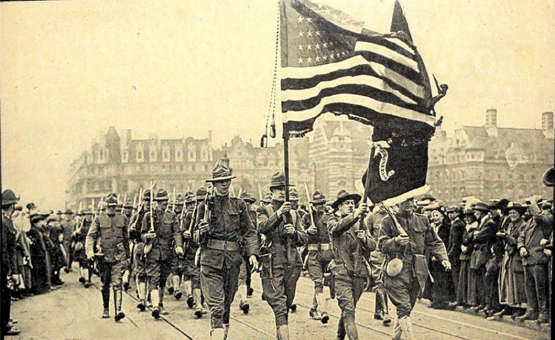“There could be no stronger contrast than these bands of young American soldiers (they all look young), vigorous, tall, supple, nor very strongly built perhaps, neither the square-shouldered, powerful Tommy, nor the sturdy muscular Poilu, but swinging along with a firm free step – very bright eager eyes looking at everything and responding at once to the slightest sign of interest. They, too, had come to fight for an ideal – freedom and liberty of all nations, but theirs was no lost cause, their coming meant victory and they knew it.”
Contrast the above with Vera Britain’s description of her first glimpse of parading American infantry in her 1933 memoir, Testament of Youth:
“They looked larger than ordinary men,” she wrote. She knew they weren’t British soldiers, and began to wonder where they had come from. Then, she heard one of the other nurses say, “Look! Look! Here are the Americans!”
“I pressed forward with the others to watch the United States physically entering the War, so god-like, so magnificent, so splendidly unimpaired in comparison with the tired, nerve-racked men of the British Army.”
Click here to read more about the American Doughboys of the First World War.
KEY WORDS: 1917 American army men seen on Paris streets,doughboys compared to british and french soldiers 1917,US military arrive in Paris 1917,city of paris welcomes american soldiers 1917
















































